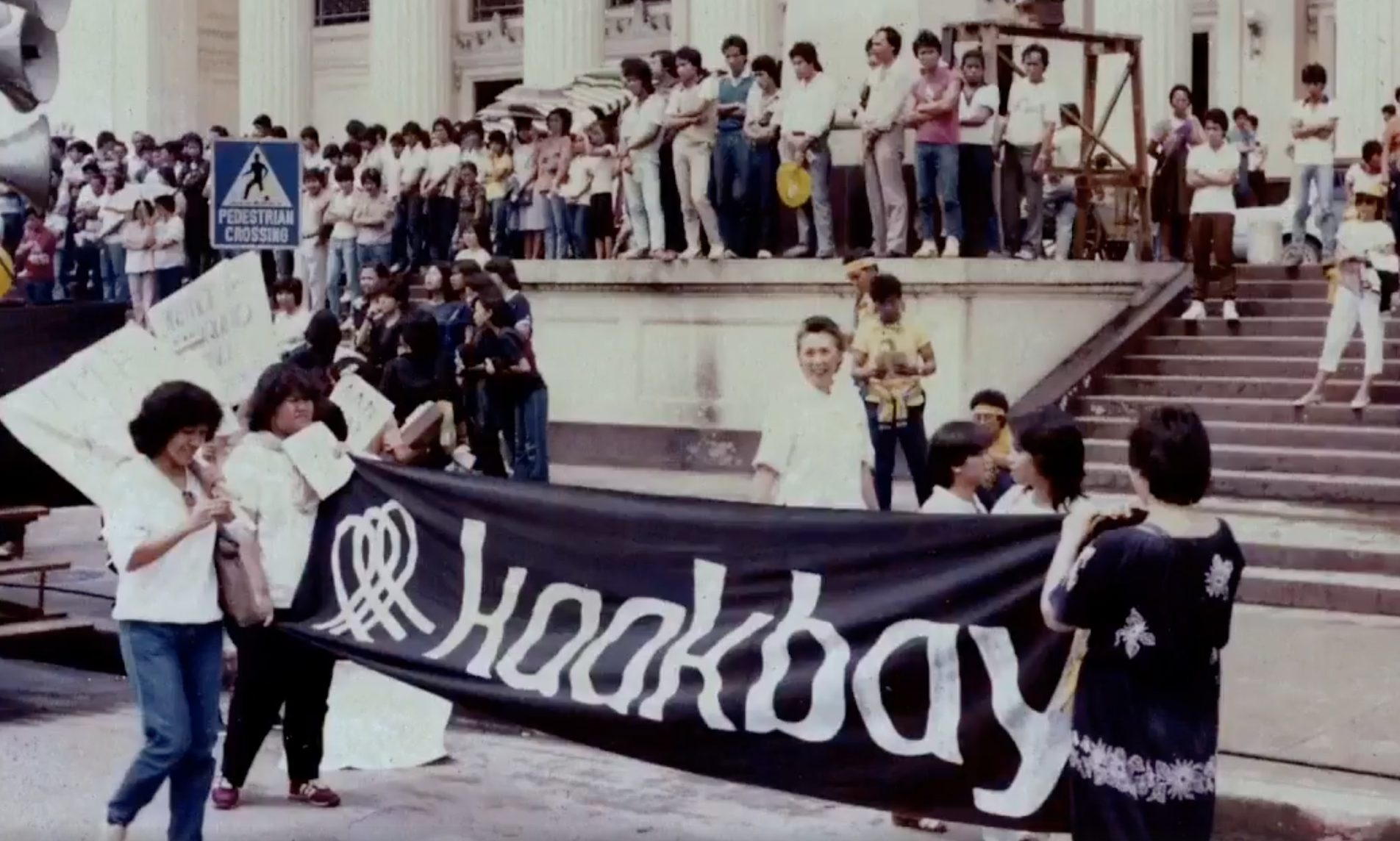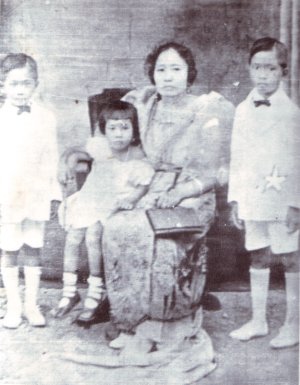|
Philippine National Police
The Philippine National Police (PNP; ) is the national police force of the Philippines. Its national headquarters is located at Camp Crame in Bagong Lipunan ng Crame, Quezon City. Currently, it has approximately 228,000 personnel to police a population in excess of 100 million. The agency is administered and controlled by the National Police Commission (Philippines), National Police Commission and is part of the Department of the Interior and Local Government (DILG). Local police officers are operationally controlled by city or municipal mayors. DILG, on the other hand, organizes, trains and equips the PNP for the performance of police functions as a police force that is national in scope and civilian in character. The PNP was formed on January 29, 1991, when the Philippine Constabulary and the Integrated National Police were merged pursuant to Republic Act 6975 of 1990. [...More Info...] [...Related Items...] OR: [Wikipedia] [Google] [Baidu] |
Philippine Constabulary
The Philippine Constabulary (PC; , ''HPP''; ) was a gendarmerie-type military police force of the Philippines from 1901 to 1991, and the predecessor to the Philippine National Police. It was created by the Insular Government, American occupational government to replace the Spanish colonial Civil Guard (Philippines), Guardia Civil, happened on the 19th century history of the Philippines. It was the first of the four branches of the Armed Forces of the Philippines. On January 29, 1991, it was merged with the Integrated National Police to form the Philippine National Police. History The Philippine Constabulary (PC) was established on August 18, 1901, under the general supervision of the Governor-General of the Philippines#Insular Government (1901–1935), civil Governor-General of the Philippines, by the authority of Act. No. 175 of the Second Philippine Commission, to maintain peace, law, and order in the various provinces of the Philippine Islands. By the end of 1901, a to ... [...More Info...] [...Related Items...] OR: [Wikipedia] [Google] [Baidu] |
Commission On Elections (Philippines)
The Commission on Elections (), abbreviated as , is one of the three Constitutional Commission#Philippines, constitutional commissions of the Philippines. Its principal role is to enforce all laws and regulations relative to the conduct of elections in the Philippines. The other two Constitutional Commissions are the Commission on Audit (Philippines), Commission on Audit and Civil Service Commission (Philippines), Civil Service Commission. Functions According to Article IX-C, Section 2 of the 1987 Constitution of the Philippines, the Commission on Elections (COMELEC) shall exercise the following powers and functions: # Enforce and administer all laws and regulations relative to the conduct of an election, plebiscite, initiative, referendum, and recall. # Exercise exclusive original jurisdiction over all contests relating to the elections, returns, and qualifications of all elective regional, provincial, and city officials, and appellate jurisdiction over all contests involving ... [...More Info...] [...Related Items...] OR: [Wikipedia] [Google] [Baidu] |
Internal Affairs Service Of Philippine National Police
The Internal Affairs Service (IAS) of the Philippine National Police (PNP) which investigates infractions allegedly committed by the members of the PNP. It was created pursuant to ''Republic Act (RA) 8551'' otherwise known as "The PNP Reform and Reorganization Act of 1998", and is tasked to instill police discipline, enhance the delivery of police service and dispense justice. Proposed independence As conceived in RA 8551, the IAS is part of the PNP - an institutional setup which has led to proposals for the IAS to be made an independent unit, since all of the unit's actions are subject to review by, and are sometimes reversed by PNP commanders. The institutional arrangement also made it difficult for the investigate any allegations which may be directed towards top PNP commanders, who are the ones who approve the investigations. As a result, in 2019, it was proposed that the agency be removed from the administration of the PNP and made an attached agency of the Philippines' Dep ... [...More Info...] [...Related Items...] OR: [Wikipedia] [Google] [Baidu] |
Republic Act No
A republic, based on the Latin phrase ''res publica'' ('public affair' or 'people's affair'), is a state in which political power rests with the public (people), typically through their representatives—in contrast to a monarchy. Although a republic is most often a single sovereign state, subnational state entities that have governments that are republican in nature may be referred to as republics. Representation in a republic may or may not be freely elected by the general citizenry. In many historical republics, representation has been based on personal status and the role of elections has been limited. This remains true today; among the 159 states that use ''republic'' in their official names , and other states formally constituted as republics, are states that narrowly constrain both the right of representation and the process of election. The term developed its modern meaning in reference to the constitution of the ancient Roman Republic, lasting from the overthrow of ... [...More Info...] [...Related Items...] OR: [Wikipedia] [Google] [Baidu] |
Department Of National Defense (Philippines)
The Department of National Defense (DND; ) is the Executive Departments of the Philippines, executive department of the Philippine government responsible for guarding against external and internal threats to peace and security in the country. The Department of National Defense exercises executive supervision over the Armed Forces of the Philippines (AFP), the Office of Civil Defense (Philippines), Office of Civil Defense (OCD), the Philippine Veterans Affairs Office (PVAO), the National Defense College of the Philippines (NDCP), the Government Arsenal (GA), and Veterans Memorial Medical Center (VMMC). It is also responsible for disaster preparation and management in the country. It is headed by the Secretary of National Defense (Philippines), secretary of national defense, who is a member of the President of the Philippines, president's cabinet. The seat is vacant as of May 22, 2025. History The Department of National Defense or DND was formally organised on November 1, 1939, ... [...More Info...] [...Related Items...] OR: [Wikipedia] [Google] [Baidu] |
Davide Commission
The 1989 Philippine coup attempt was the most serious attempted coup d'état against the government of Philippine President Corazon Aquino and part of a series of coup attempts against her. It was staged beginning December 1, 1989, by members of the Armed Forces of the Philippines belonging to the Reform the Armed Forces Movement (RAM) and soldiers loyal to former President Ferdinand Marcos. Metro Manila was shaken by this Christmas-time coup, which almost seized Malacañang Palace. It was completely defeated by the Philippine government by December 9, 1989. Background Philippine politics between 1986 and 1991 was punctuated by Aquino's struggle to survive physically and politically a succession of coup attempts, culminating in a large, bloody, and well-financed attempt in December 1989. This attempt involved upwards of 3,000 troops, including elite Scout Rangers and marines, in a coordinated series of attacks on Camp Crame and Camp Aquinaldo, Fort Bonifacio, Cavite Naval Ba ... [...More Info...] [...Related Items...] OR: [Wikipedia] [Google] [Baidu] |
Metrocom Intelligence And Security Group
The Metrocom Intelligence and Security Group (MISG) was the branch of the Philippine Constabulary's Metropolitan Command under the administration of President Ferdinand Marcos. It was responsible for maintaining peace and order though its unit tasked with going after insurgents was linked to human rights violations at the time. It was headed by Rolando Abadilla. History The MISG was formerly formed as the Metrocom Police Intelligence Service (MPIS). But when Abadilla was appointed, he expanded the group. Branches of MISG The Branches of the MISG was Administration Branch, Police Intelligence Branch, Security Branch, Technical Intelligence Branch and Light Reaction Units. Notable Deputies Colonel Abadilla's notable deputies are: Colonel Roberto "Bobby" Ortega, Colonel Reynaldo Berroya and then-Colonel Panfilo "Ping" Lacson. Notable cases The MISG was assigned to rescue the then-kidnapped Robina Gokongwei, daughter of the tycoon John Gokongwei John Robinson Lim Gokong ... [...More Info...] [...Related Items...] OR: [Wikipedia] [Google] [Baidu] |
Human Rights Abuses During The Presidency Of Ferdinand Marcos
The dictatorship of 10th Philippine president Ferdinand Marcos in the 1970s and 1980s is historically remembered for its record of human rights abuses, particularly targeting political opponents, student activists, journalists, religious workers, farmers, and others who fought against his dictatorship. Based on the documentation of Amnesty International, Task Force Detainees of the Philippines, and similar human rights monitoring entities, historians believe that the Marcos dictatorship was marked by 3,257 known Extrajudicial killings and forced disappearances in the Philippines, extrajudicial killings, 35,000 List of torture methods used by the Marcos dictatorship, documented tortures, 737 'Forced disappearance, disappeared', and 70,000 Political detainees under the Marcos dictatorship, incarcerations. Some 2,520 of the 3,257 murder victims were tortured and mutilated before their bodies were dumped in various places for the public to discover - a tactic meant to sow fear among t ... [...More Info...] [...Related Items...] OR: [Wikipedia] [Google] [Baidu] |
People Power Revolution
The People Power Revolution, also known as the EDSA Revolution or the February Revolution, were a series of popular Demonstration (people), demonstrations in the Philippines, mostly in Metro Manila, from February 22 to 25, 1986. There was a sustained campaign of civil resistance against regime violence and electoral fraud. The nonviolent revolution led to the departure of Ferdinand Marcos, the end of his 20-year dictatorship and the restoration of democracy in the Philippines. It is also referred to as the Yellow Revolution due to the presence of yellow ribbons during demonstrations (in reference to the Tony Orlando and Dawn song "Tie a Yellow Ribbon Round the Ole Oak Tree") as a symbol of protest following the Assassination of Benigno Aquino Jr., assassination of Filipino senator Benigno "Ninoy" Aquino Jr. in August 1983 upon his return to the Philippines from exile. It was widely seen as a victory of the people against two decades of presidential rule by President Marcos, ... [...More Info...] [...Related Items...] OR: [Wikipedia] [Google] [Baidu] |
Ferdinand Marcos
Ferdinand Emmanuel Edralin Marcos Sr. (September 11, 1917 – September 28, 1989) was a Filipino lawyer, politician, dictator, and Kleptocracy, kleptocrat who served as the tenth president of the Philippines from 1965 to 1986. He ruled the country under Martial law under Ferdinand Marcos, martial law from 1972 to 1981, granting himself expanded powers under the Constitution of the Philippines#The 1973 Constitution, 1973 Constitution. Marcos described his philosophy as "constitutional authoritarianism". He was deposed in 1986 by the People Power Revolution and was succeeded as president by Corazon Aquino. Marcos gained political success by exaggerating his actions in World War II, claiming to have been the "most decorated war hero in the Philippines". — United States Army documents described his claims as "fraudulent" and "absurd". After the war, he became a lawyer. He served in the Philippine House of Representatives from 1949 to 1959 and the Philippine Senate from 1959 to ... [...More Info...] [...Related Items...] OR: [Wikipedia] [Google] [Baidu] |





